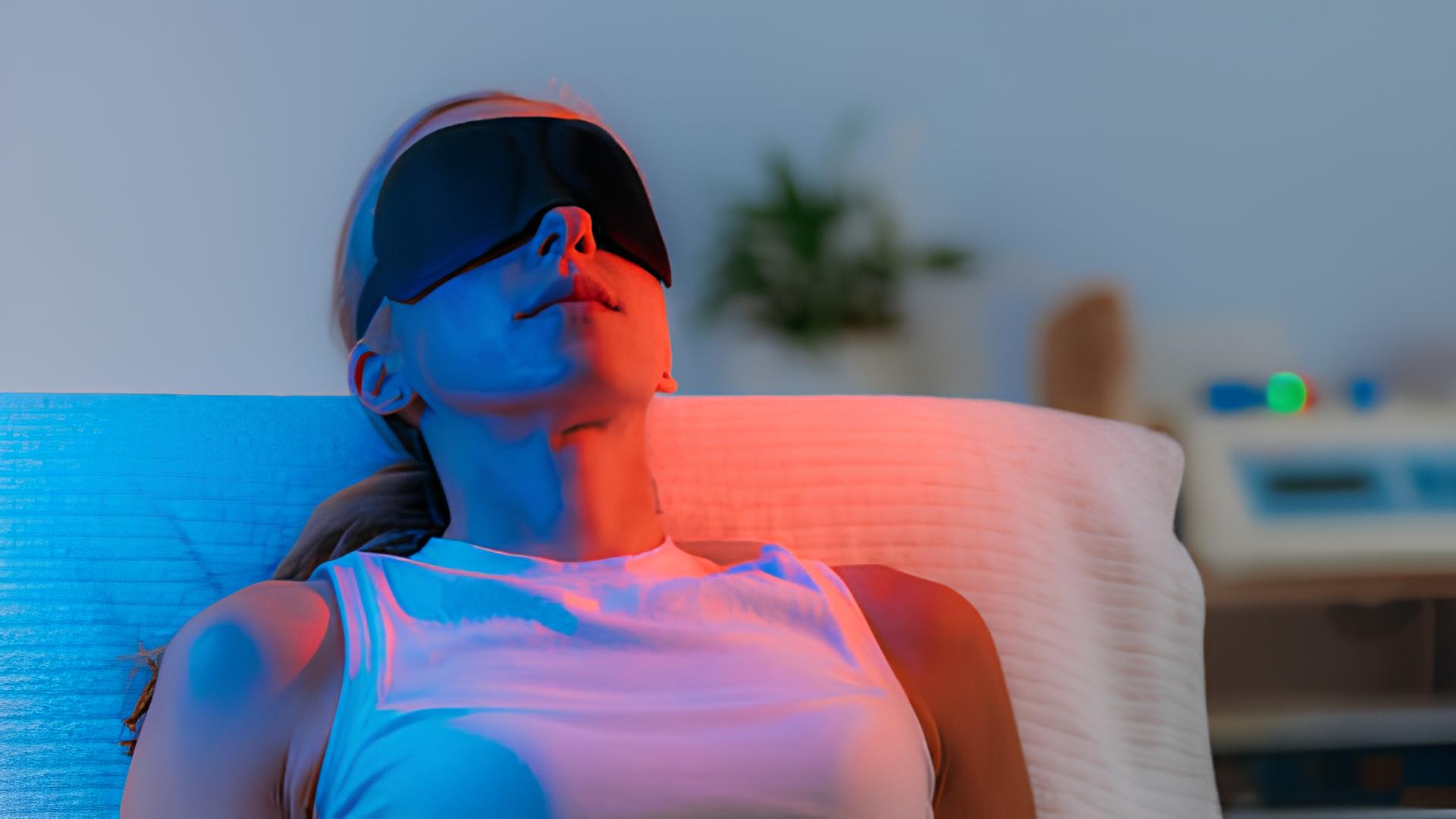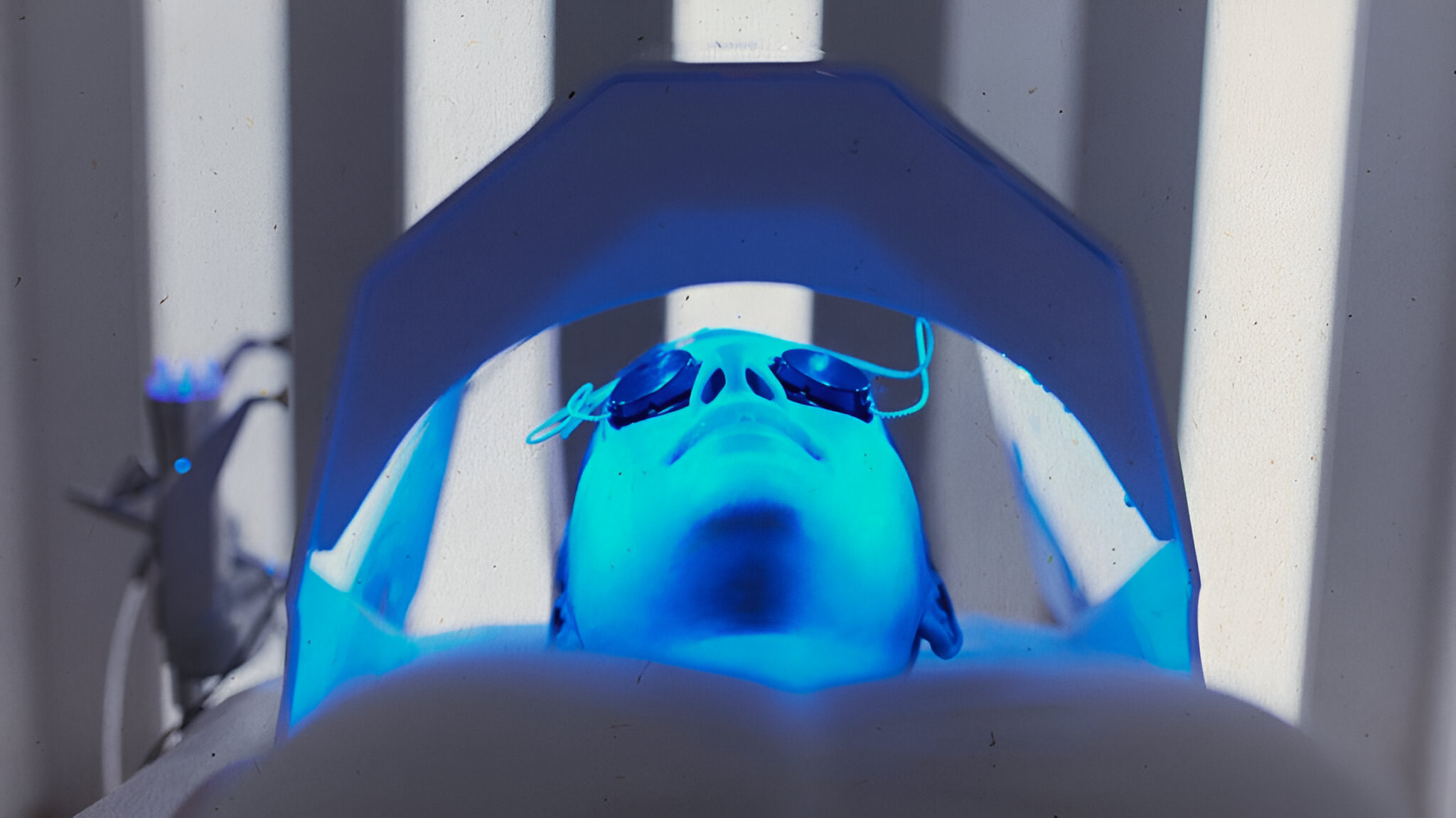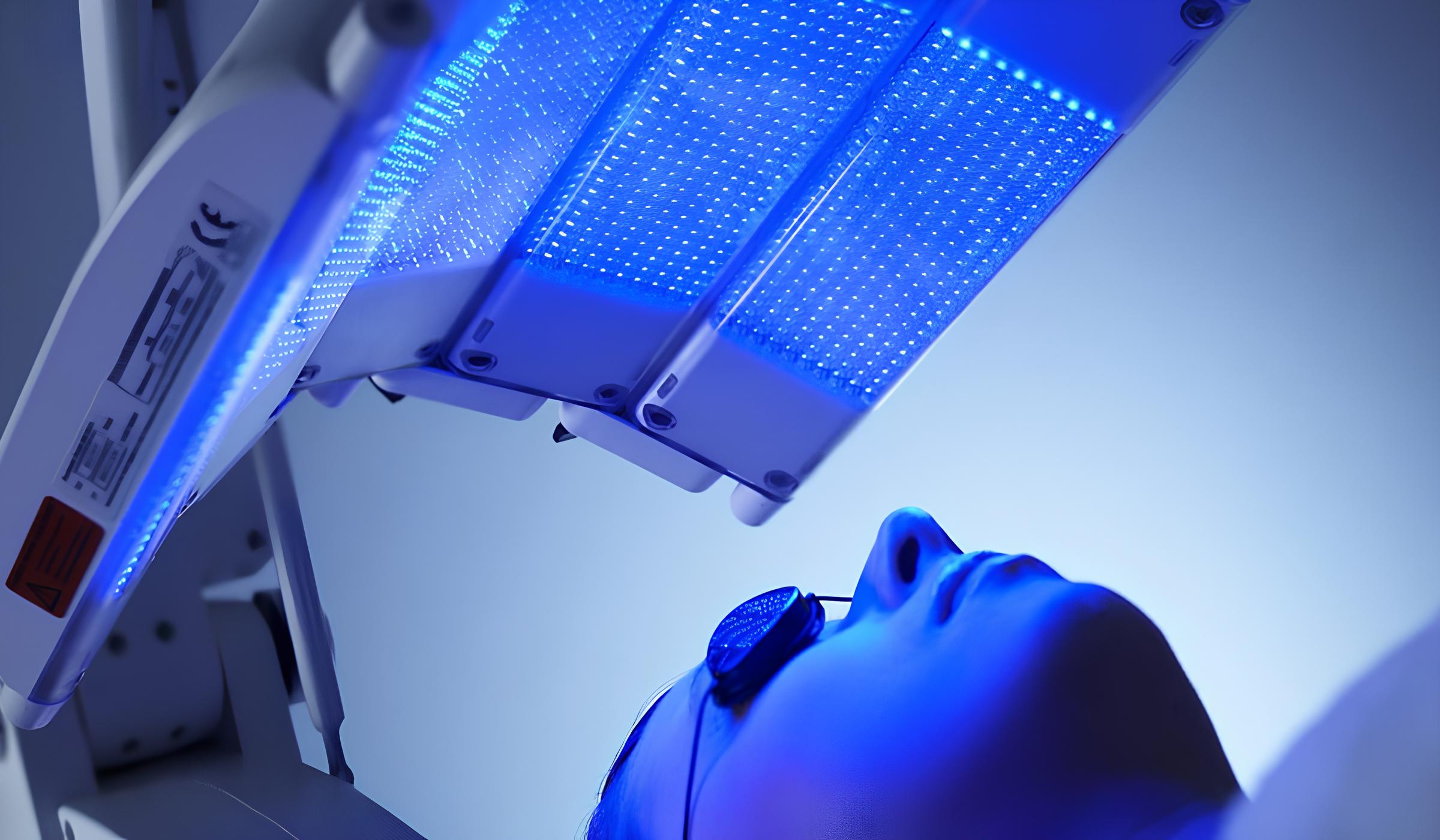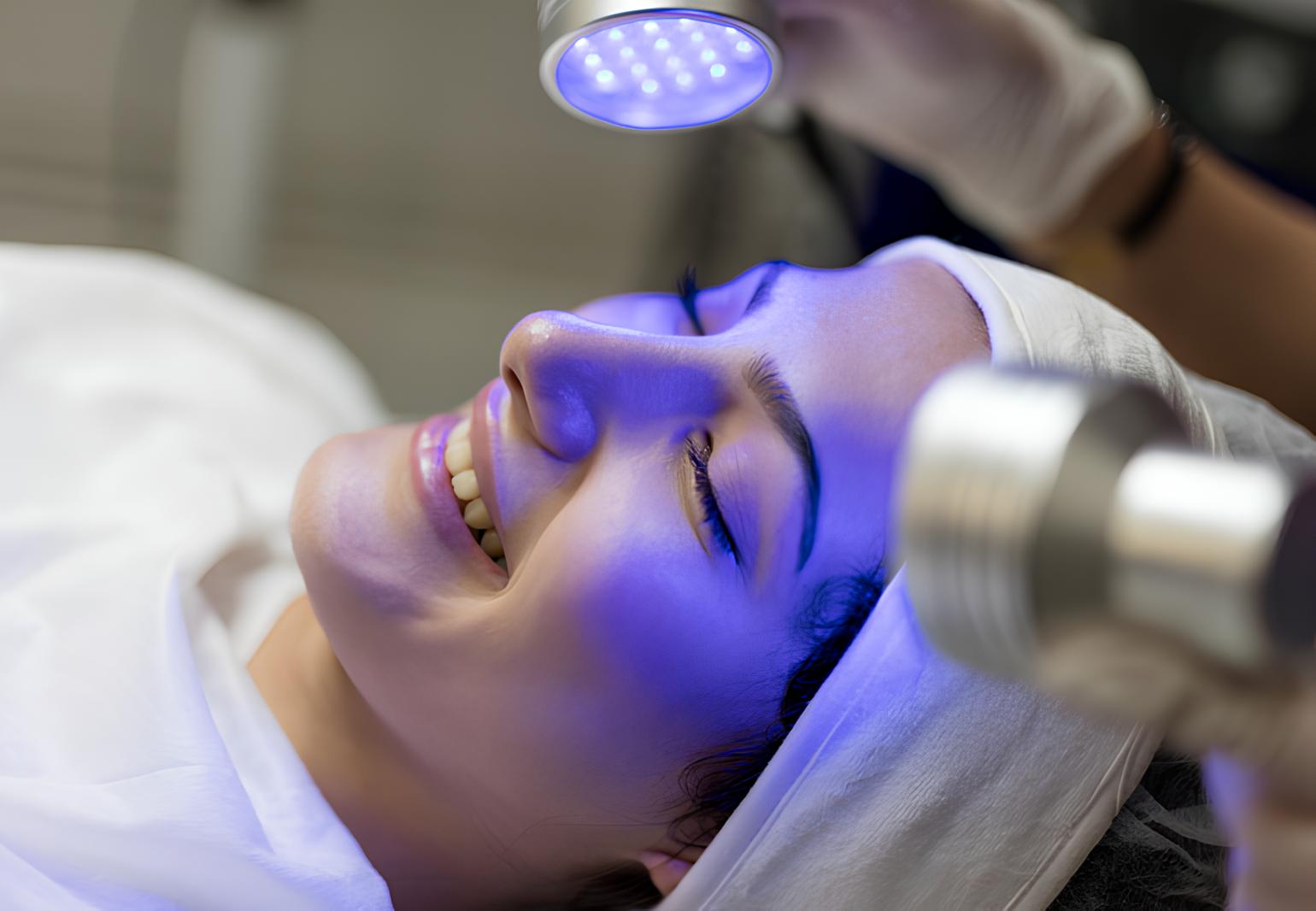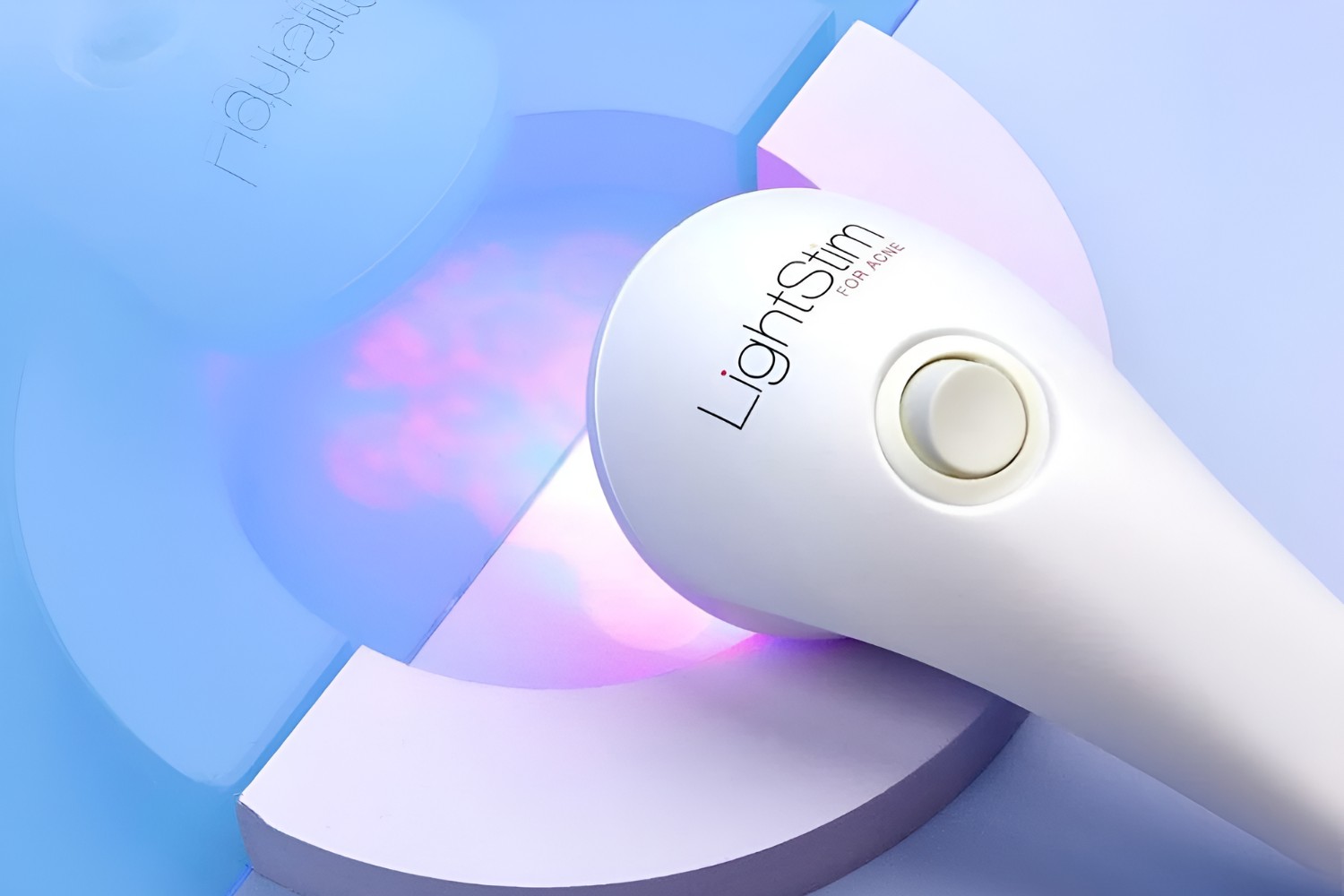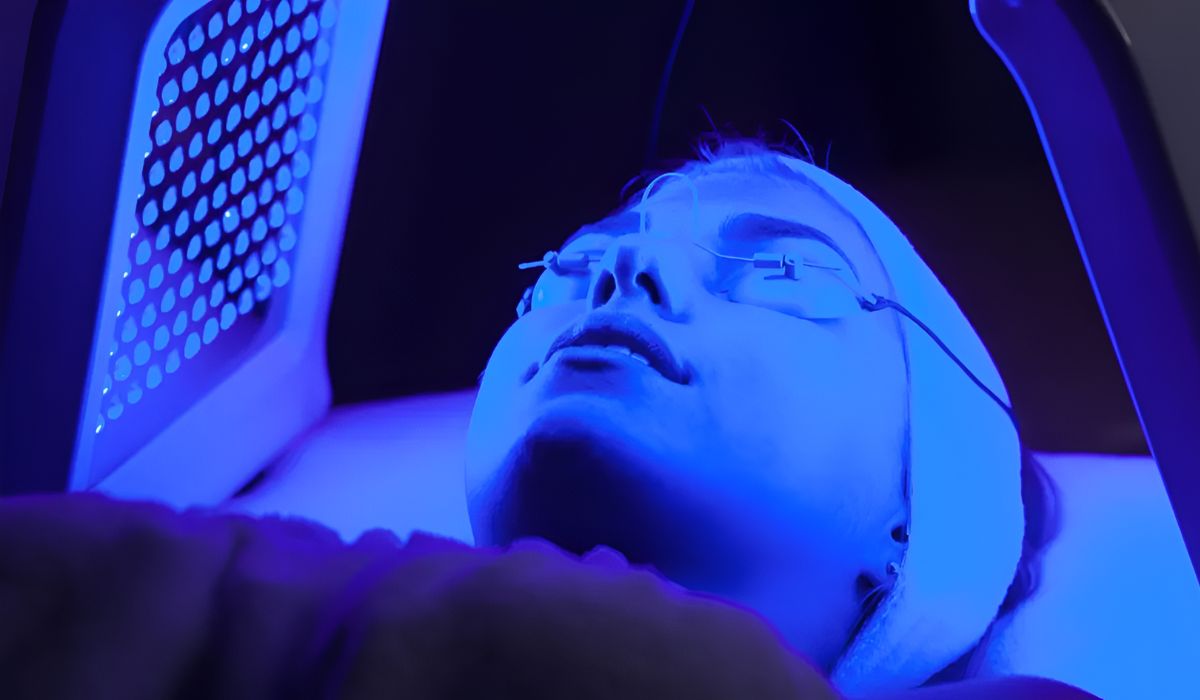Introduction
In recent years, the use of light therapy has gained significant attention for its potential health benefits. Red and blue light therapy, in particular, have emerged as promising modalities for addressing various health concerns. From skincare to pain management, these therapies offer a non-invasive and natural approach to enhancing overall well-being.
The therapeutic use of red and blue light has deep roots in scientific research, and its applications continue to expand across diverse fields. In this comprehensive guide, we will delve into the fascinating world of red and blue light therapy, exploring their mechanisms, benefits, and practical applications. By gaining a deeper understanding of these therapies, you can harness their potential to improve your health and quality of life.
Through this exploration, we will uncover the science behind light therapy and shed light on its versatile applications. Whether you are seeking relief from skin conditions, looking to accelerate muscle recovery, or aiming to enhance your mental clarity, the insights shared in this guide will equip you with the knowledge to make informed decisions about integrating red and blue light therapy into your wellness routine.
Join us on this illuminating journey as we unravel the therapeutic insights and discover the transformative potential of red and blue light therapy.
What is Red Light Therapy?
Red light therapy, also known as low-level laser therapy (LLLT) or photobiomodulation, involves the use of red or near-infrared light to stimulate cellular function and promote healing within the body. This non-invasive treatment has gained traction for its diverse therapeutic applications, spanning from skincare to pain management.
At its core, red light therapy operates on the principle of photobiomodulation, wherein specific wavelengths of light penetrate the skin and are absorbed by the cells. These wavelengths, typically in the range of 630 to 850 nanometers, have been shown to enhance mitochondrial function and increase adenosine triphosphate (ATP) production. ATP, often referred to as the "energy currency" of the cell, plays a crucial role in various cellular processes, including tissue repair and regeneration.
The therapeutic effects of red light therapy extend to its ability to mitigate inflammation, improve blood circulation, and promote collagen production. As a result, this modality has garnered attention for its potential in addressing a myriad of health concerns, including skin conditions, musculoskeletal injuries, and neurological disorders.
In the realm of skincare, red light therapy has been embraced for its capacity to rejuvenate the skin, reduce wrinkles, and enhance overall complexion. By stimulating collagen synthesis and increasing blood flow, it can aid in the management of acne, scars, and other dermatological issues.
Furthermore, red light therapy has demonstrated efficacy in the realm of pain management and tissue repair. Athletes and fitness enthusiasts have leveraged its benefits to accelerate muscle recovery, alleviate joint pain, and improve athletic performance. Additionally, individuals grappling with chronic pain conditions, such as arthritis and fibromyalgia, have found relief through the application of red light therapy.
The versatility of red light therapy extends beyond physical wellness, as it has shown promise in addressing mental health concerns. Research suggests that red light therapy may have a positive impact on mood disorders, such as depression and anxiety, by influencing neurotransmitter levels and promoting neuroplasticity.
In essence, red light therapy harnesses the power of specific wavelengths of light to stimulate cellular function, promote healing, and enhance overall well-being. Its non-invasive nature, coupled with its diverse applications, positions red light therapy as a compelling modality for individuals seeking natural and effective solutions for various health and wellness needs.
Benefits of Red Light Therapy
Red light therapy offers a myriad of compelling benefits that span across the realms of skincare, pain management, and overall wellness. By harnessing the therapeutic potential of specific wavelengths of light, this non-invasive modality has garnered attention for its diverse applications and transformative effects.
Skin Rejuvenation and Collagen Production
One of the most prominent benefits of red light therapy lies in its ability to rejuvenate the skin and stimulate collagen production. By penetrating the skin at a cellular level, red light therapy promotes the synthesis of collagen, a vital protein responsible for maintaining skin elasticity and firmness. This leads to a reduction in wrinkles, fine lines, and other signs of aging, ultimately contributing to a more youthful and radiant complexion. Moreover, individuals grappling with acne and scarring have found red light therapy to be a valuable ally in managing these dermatological concerns, as it aids in promoting skin healing and reducing inflammation.
Accelerated Wound Healing and Tissue Repair
Red light therapy has demonstrated remarkable efficacy in accelerating wound healing and facilitating tissue repair. Through its ability to enhance cellular metabolism and promote circulation, this modality expedites the body's natural healing processes. Whether recovering from a musculoskeletal injury or seeking to address chronic wounds, individuals have experienced notable improvements in healing rates and tissue regeneration with the consistent application of red light therapy.
Pain Management and Muscle Recovery
For individuals navigating the challenges of chronic pain or seeking to expedite muscle recovery, red light therapy offers a non-pharmacological approach to alleviating discomfort and enhancing physical performance. By reducing inflammation and promoting cellular repair, red light therapy can effectively mitigate pain associated with conditions such as arthritis, fibromyalgia, and muscular injuries. Additionally, athletes and fitness enthusiasts have harnessed the benefits of red light therapy to accelerate muscle recovery, minimize post-exercise soreness, and optimize their training regimens.
Mood Enhancement and Cognitive Function
Beyond its physical benefits, red light therapy has shown promise in influencing mood and cognitive function. Research suggests that the application of red light may contribute to improved mental clarity, enhanced focus, and a positive impact on mood disorders such as depression and anxiety. By modulating neurotransmitter levels and promoting neuroplasticity, red light therapy holds potential in supporting mental wellness and cognitive vitality.
In essence, the benefits of red light therapy extend far and wide, offering a holistic approach to enhancing both physical and mental well-being. With its non-invasive nature and versatile applications, red light therapy stands as a compelling modality for individuals seeking natural and effective solutions for a spectrum of health and wellness needs.
What is Blue Light Therapy?
Blue light therapy, also known as photodynamic therapy, harnesses the power of specific wavelengths of blue light to address a range of dermatological and medical conditions. This non-invasive treatment modality has garnered attention for its efficacy in targeting skin concerns, combating certain types of acne, and even addressing precancerous lesions.
At its core, blue light therapy operates on the principle of utilizing specific wavelengths of light to activate a photosensitizing agent, typically a medication or topical solution, that has been applied to the skin. When exposed to the blue light, the photosensitizing agent becomes activated and initiates a reaction that selectively targets and destroys abnormal cells or bacteria while sparing surrounding healthy tissue.
One of the primary applications of blue light therapy lies in its effectiveness in treating acne. The blue light, typically in the range of 405 to 420 nanometers, penetrates the skin and activates porphyrins, which are naturally occurring molecules within acne-causing bacteria. This activation generates singlet oxygen, a highly reactive form of oxygen that effectively destroys the bacteria responsible for acne without harming the surrounding skin tissue. As a result, blue light therapy offers a targeted and non-invasive approach to managing acne, reducing inflammation, and promoting clearer skin.
Beyond its role in addressing acne, blue light therapy has shown promise in treating actinic keratoses, a precancerous skin condition characterized by rough, scaly patches caused by excessive sun exposure. By leveraging the photosensitizing properties of certain medications in conjunction with blue light exposure, healthcare providers can target and eliminate abnormal cells, reducing the risk of progression to skin cancer.
Moreover, blue light therapy has exhibited potential in managing certain types of skin cancer, such as basal cell carcinoma and squamous cell carcinoma. When used in combination with photosensitizing agents, blue light therapy can selectively target and destroy cancerous cells, offering a non-surgical alternative for individuals with specific forms of skin cancer.
In essence, blue light therapy harnesses the therapeutic potential of specific wavelengths of light to address dermatological conditions, combat acne, and target precancerous and cancerous lesions. Its non-invasive nature and targeted approach position blue light therapy as a valuable modality for individuals seeking effective and minimally disruptive solutions for various skin-related concerns.
Benefits of Blue Light Therapy
Blue light therapy offers a range of compelling benefits, particularly in the realm of dermatological care and skin health. By harnessing the therapeutic potential of specific wavelengths of light, this non-invasive modality has emerged as a valuable tool for addressing various skin concerns and promoting overall skin wellness.
Targeted Acne Management
One of the primary and well-documented benefits of blue light therapy lies in its effectiveness in managing acne. The specific wavelengths of blue light penetrate the skin and activate porphyrins, which are naturally occurring molecules within acne-causing bacteria. This activation triggers the production of singlet oxygen, a highly reactive form of oxygen that selectively targets and eradicates the bacteria responsible for acne, without causing harm to the surrounding healthy skin tissue. Consequently, individuals undergoing blue light therapy experience a reduction in acne lesions, diminished inflammation, and an overall improvement in skin clarity.
Precancerous Lesion Treatment
In addition to its role in managing acne, blue light therapy has shown promise in addressing precancerous skin conditions, such as actinic keratoses. By utilizing photosensitizing agents in conjunction with blue light exposure, healthcare providers can effectively target and eliminate abnormal cells associated with actinic keratoses. This targeted approach reduces the risk of progression to skin cancer, offering individuals a proactive and non-invasive method for managing precancerous lesions.
Non-Surgical Skin Cancer Treatment
Furthermore, blue light therapy has demonstrated potential in the treatment of certain types of skin cancer, including basal cell carcinoma and squamous cell carcinoma. When combined with photosensitizing agents, blue light therapy can selectively target and destroy cancerous cells, presenting a non-surgical alternative for individuals with specific forms of skin cancer. This approach not only offers a minimally invasive treatment option but also holds the potential to preserve healthy surrounding tissue, minimizing the impact on the individual's overall skin health.
Enhanced Skin Clarity and Health
Beyond its targeted applications, blue light therapy contributes to overall skin health by promoting clarity and radiance. The ability of blue light to address acne, precancerous lesions, and specific types of skin cancer underscores its role in supporting comprehensive skin wellness. By leveraging the therapeutic benefits of blue light, individuals can attain clearer, healthier skin while minimizing the potential for invasive procedures or harsh topical treatments.
In essence, the benefits of blue light therapy extend to its targeted approach in managing acne, addressing precancerous lesions, and offering a non-surgical alternative for specific types of skin cancer. With its non-invasive nature and ability to promote overall skin health, blue light therapy stands as a valuable modality for individuals seeking effective and gentle solutions for a spectrum of dermatological concerns.
Understanding the Science Behind Light Therapy
Light therapy, encompassing both red and blue light modalities, operates on the fundamental principles of photobiomodulation and photosensitization, each leveraging specific wavelengths of light to elicit distinct physiological responses within the body.
Red Light Therapy Mechanisms
Red light therapy, often utilizing wavelengths ranging from 630 to 850 nanometers, penetrates the skin and is absorbed by cellular components, particularly the mitochondria. This interaction stimulates mitochondrial function, leading to an increase in adenosine triphosphate (ATP) production. ATP, serving as the energy currency of the cell, plays a pivotal role in cellular activities, including tissue repair, regeneration, and modulation of inflammatory responses.
Furthermore, red light therapy has been shown to modulate oxidative stress and enhance blood circulation, contributing to its efficacy in promoting wound healing and tissue repair. By stimulating collagen synthesis, red light therapy aids in skin rejuvenation, reducing wrinkles, and improving overall skin tone and texture. Additionally, its anti-inflammatory properties make it a valuable tool in managing musculoskeletal injuries and chronic pain conditions.
Blue Light Therapy Mechanisms
In contrast, blue light therapy, typically operating within the 405 to 420 nanometer range, capitalizes on the activation of photosensitizing agents to target specific cellular components. When exposed to blue light, these agents initiate a reaction that selectively destroys abnormal cells or bacteria, such as those associated with acne and precancerous lesions, while preserving healthy surrounding tissue.
The activation of porphyrins within acne-causing bacteria by blue light leads to the generation of singlet oxygen, which effectively eradicates the bacteria without harming the surrounding skin. This targeted approach reduces inflammation and promotes clearer skin, positioning blue light therapy as a non-invasive solution for managing acne.
Moreover, in the context of precancerous and cancerous lesions, blue light therapy, in conjunction with photosensitizing agents, offers a non-surgical alternative for targeting and eliminating abnormal cells, thereby reducing the risk of progression to skin cancer.
Therapeutic Implications
The scientific underpinnings of red and blue light therapy underscore their diverse therapeutic implications across skincare, pain management, and dermatological care. By harnessing the unique properties of specific wavelengths of light, these modalities offer non-invasive, targeted, and effective solutions for an array of health concerns.
In essence, the science behind light therapy illuminates its potential to modulate cellular function, promote healing, and enhance overall well-being, paving the way for innovative and holistic approaches to health and wellness.
How to Use Red and Blue Light Therapy
Red Light Therapy Application
-
Selecting the Right Device: When incorporating red light therapy into your wellness routine, it is essential to choose a high-quality device that emits specific wavelengths within the therapeutic range. Look for FDA-cleared devices and consider factors such as power output, treatment area coverage, and user-friendly features.
-
Understanding Treatment Protocols: To optimize the benefits of red light therapy, familiarize yourself with recommended treatment protocols. This includes determining the ideal distance between the light source and the targeted area, as well as the recommended duration of each session. Adhering to established protocols ensures consistent and effective application.
-
Skin Rejuvenation: For skincare applications, position the red light device at the appropriate distance from the skin, typically around 6 to 12 inches, and administer treatment for the recommended duration, often ranging from 10 to 20 minutes per targeted area. Consistency is key, so establish a regular schedule for sessions to maximize the rejuvenating effects on the skin.
-
Pain Management and Muscle Recovery: When using red light therapy for pain management or muscle recovery, ensure that the targeted area receives adequate exposure to the red light. This may involve positioning the device at varying angles to cover the entire area of concern. Additionally, consider incorporating targeted massage or stretching during or after the therapy session to enhance the therapeutic outcomes.
-
Mental Wellness Support: For individuals seeking to leverage red light therapy for mental wellness, such as addressing mood disorders or enhancing cognitive function, integrating the therapy into a calming and conducive environment can amplify its potential benefits. Establish a tranquil space for the therapy sessions, and consider complementary practices such as meditation or deep breathing to augment the overall experience.
Blue Light Therapy Application
-
Consultation with a Healthcare Provider: Given the targeted nature of blue light therapy for specific dermatological concerns, it is crucial to consult with a qualified healthcare provider to determine the suitability of this modality for your individual needs. Healthcare professionals can assess the condition being addressed and recommend an appropriate treatment plan.
-
Photosensitizing Agent Application: In instances where blue light therapy is used in conjunction with photosensitizing agents for acne or precancerous lesions, carefully follow the instructions provided by your healthcare provider for the application of the photosensitizing agent. This may involve applying a specific medication or solution to the targeted area of concern.
-
Optimal Exposure and Duration: When undergoing blue light therapy, ensure that the targeted area receives optimal exposure to the blue light, as directed by your healthcare provider. Adhere to the recommended duration of the therapy session, maintaining consistent and precise application to maximize its efficacy.
-
Post-Treatment Care: Following a blue light therapy session, it is important to adhere to any post-treatment care guidelines provided by your healthcare provider. This may include avoiding direct sunlight or specific skincare products for a designated period to optimize the treatment outcomes and minimize potential side effects.
By understanding and implementing these guidelines, individuals can effectively integrate red and blue light therapy into their wellness regimens, harnessing the potential benefits of these non-invasive modalities for a spectrum of health and wellness needs.
Potential Side Effects and Risks
While red and blue light therapies offer a multitude of benefits, it is essential to be mindful of potential side effects and risks associated with these modalities. Understanding and addressing these considerations is crucial for ensuring safe and effective utilization of light therapy.
Red Light Therapy Side Effects
Red light therapy is generally well-tolerated, with minimal reported side effects. However, some individuals may experience mild and transient effects, including:
-
Eye Strain: Prolonged exposure to bright red light may lead to temporary eye strain or discomfort. It is advisable to use protective eyewear or avoid direct eye exposure during red light therapy sessions.
-
Skin Sensitivity: In rare cases, individuals with highly sensitive skin may experience mild irritation or redness at the treatment site. Adjusting the distance from the light source and gradually acclimating the skin to the therapy can mitigate this potential side effect.
-
Heat Sensation: The warmth generated by red light therapy may cause a mild heat sensation on the skin, particularly during longer sessions. Monitoring the skin's response and adjusting the duration and intensity of the therapy can help manage this effect.
Blue Light Therapy Side Effects
Blue light therapy, often used for targeted dermatological concerns, may entail specific considerations:
-
Photosensitivity: Following the application of photosensitizing agents for blue light therapy, individuals may experience heightened sensitivity to sunlight. Adhering to post-treatment care guidelines and avoiding direct sun exposure can mitigate the risk of adverse reactions.
-
Skin Irritation: In some cases, individuals undergoing blue light therapy may encounter mild skin irritation or redness at the treatment site. This is typically transient and can be addressed through appropriate skincare practices and adherence to post-treatment care instructions.
-
Potential Eye Strain: Similar to red light therapy, prolonged exposure to bright blue light may lead to temporary eye strain. Utilizing protective eyewear and minimizing direct eye exposure during therapy sessions can help prevent this discomfort.
General Considerations
It is important to note that individual responses to light therapy can vary, and consulting with a healthcare provider before initiating these treatments is advisable, particularly for individuals with pre-existing medical conditions or sensitivities.
Moreover, while rare, there have been isolated reports of adverse effects such as hyperpigmentation or hypopigmentation in response to light therapy. Monitoring the skin's response, adhering to recommended treatment protocols, and seeking professional guidance in case of any concerns are integral to mitigating potential risks.
By being mindful of these potential side effects and risks, individuals can approach red and blue light therapies with informed awareness, ensuring a safe and positive experience while maximizing the therapeutic benefits of these modalities.
Conclusion
In conclusion, the therapeutic insights into red and blue light therapy unveil a realm of possibilities for individuals seeking natural and effective solutions for an array of health and wellness needs. Red light therapy, with its capacity to stimulate cellular function, promote healing, and enhance overall well-being, offers a versatile approach to addressing skincare concerns, managing pain, and even supporting mental wellness. The science behind red light therapy underscores its profound impact on cellular metabolism, collagen synthesis, and inflammatory modulation, positioning it as a compelling modality with far-reaching implications.
Similarly, blue light therapy, leveraging specific wavelengths to target dermatological conditions, acne, and precancerous lesions, presents a non-invasive and targeted approach to promoting skin health. The activation of photosensitizing agents by blue light offers a precise method for combating acne-causing bacteria and addressing precancerous and cancerous lesions, underscoring its significance in dermatological care.
The practical application of red and blue light therapy involves a thoughtful and informed approach, encompassing the selection of suitable devices, adherence to treatment protocols, and collaboration with healthcare providers for blue light therapy. By integrating these modalities into wellness regimens, individuals can harness their potential benefits for skin rejuvenation, pain management, and mental wellness, among other health concerns.
While red and blue light therapies offer a wealth of benefits, it is crucial to be mindful of potential side effects and risks, ensuring safe and effective utilization. By understanding and addressing these considerations, individuals can approach light therapy with awareness and confidence, optimizing its therapeutic outcomes while mitigating potential adverse effects.
In essence, red and blue light therapies stand as beacons of innovation in the realm of natural and non-invasive health solutions. Their transformative potential extends beyond skincare and pain management, encompassing mental wellness and comprehensive skin health. As the scientific understanding of light therapy continues to evolve, these modalities hold promise for shaping the future of holistic health and well-being, offering a radiant path toward enhanced vitality and resilience.







